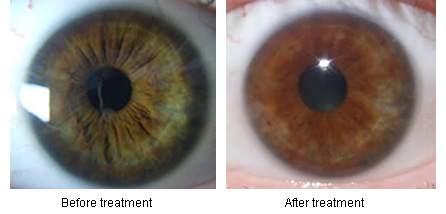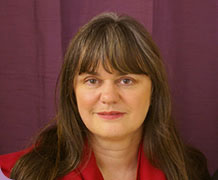The Therapy Network
Therapies
Iridology
Iridology is the analysis of patterns and structures in the iris of the eye. It is believed that the iris reflects body constitution, inherent strengths and weaknesses, and current health levels.
A iridologist compares the markings of a client's irises to an iris chart, which has evolved as a result of observation and intensive research by iridologists. The iris chart is used as the "map" which represents the basic placement of body organs and tissues.
Iridology will not show or name any specific diseases but provides information about the body tissues which indicate tendencies toward conditions of "dis-ease", often before symptoms appear. Iridology cannot specifically locate problems such as parasites, gallstones, or bacteria and viruses, but indicates the presence of inflammation and toxic conditions. It will not show pregnancy, as that is a normal function of the female body.

Iridology is a tool, which can assist a therapist in assessing the current health of a client, their general constitution, and offers an insight into the possible causes of even seemingly unrelated conditions. However it is not a system of diagnosis, and by itself does not offer treatment. It is therefore often used by a therapist in conjunction with another discipline, such as nutrition, or herbalism, homeopathy etc. In such cases it can offer valuable clues when used in conjunction with a case history. It assists the therapist by prompting what supplementary questions to ask a client, and perhaps offering indications about which therapies or treatment options might be most beneficial. Iridology also offers a method whereby any changes as a result of any treatments undertaken, will also be reflected in the irises, offering a non-invasive, simple method of follow up.
Iridology is often done by using a camera system that has sufficient capability of photographing the fine detail of the iris fibres required by the iridologist. This option offers a more immediate method of recording, which allows the therapist to analyse the pictures of each eye at leisure, with comfort benefits to the client. Otherwise an iridologist might do a manual analysis, using a special iridology torch with a separate magnifying lens or a combined iridology torch/lens, and recording the findings on an iridology chart. A manual full analysis can take some time, so sometimes a therapist will record more basic information and then concentrate on specific areas of immediate concern to the client, such as the organs of elimination, or the endocrine system, and review other systems at a later date. It is important that torch equipment specifically aimed at iridology is used, as standard torches are unsuitable and can cause irritation.
Conditions Treated
Subject to GP diagnosis and supervision. Please also see our disclaimer.
- Arthritis
- Fibromyalgia
- Allergies
- Digestion problems
- IBS
- Chemical sensitivity
- Eczema
- Dermatitis
- Chronic fatigue
- Adrenal fatigue
- Psoriasis
- Migraine
- Menopausal symptoms
- Pre menstrual tension
- Rosacea
